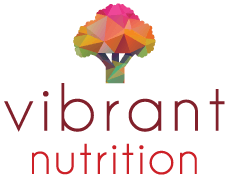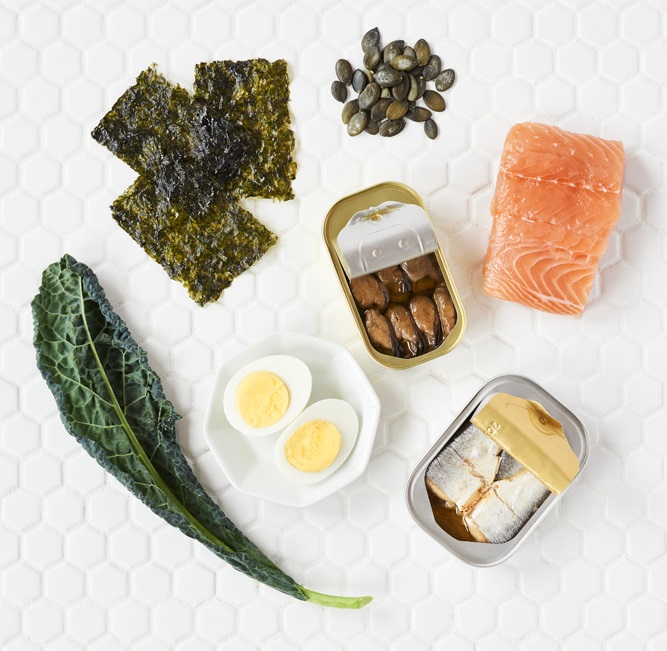March 4th, 2019
Food Additives: What You Should Know
There are a lot of concerns with “modern” food these days, and food additives and preservatives are a couple of them. Even foods that are minimally processed can still contain some of these additives. While we do not want to be fear-mongering when we discuss this topic, it’s always useful to learn about what is in food, and if you can get alternatives with less of these compounds in them. Or even if one binder or filler is better than another when it comes to human health.
A food additive is considered any chemical substance added to food to enhance its nutrition, maintain quality, increase attractiveness, or help with processing, packaging and storing. And for years, many of these were actually natural ingredients, such as ascorbic acid (a.k.a. Vitamin C). But with increased demand and globalization, there are often more unknowns on the ingredient list than things you recognize!
So let’s dive past the scary names and discuss some of the most common food additives are, where they come from, and what they’re doing in your body. And the one to avoid at ALL costs!!!
One more thing before you read: if you are a person or have a child with chronic digestive sensitivity, these additives may be making things worse!!
Why would additives be in my food if they aren’t safe?
Technically, everything in your food has been approved by Health Canada or your own country’s government policies on food safety. (Note: There is a HUGE difference between what is allowed in the food supply in Canada vs. the US. vs Europe. Say what you will about Health Canada, but they have done some things well in terms of protecting Canadians from world of chemicals in food, in addition to synthetic hormones.) That being said, we do not have good long-term data yet on most additives.
The nature of food and nutrition science means unless someone coughs up the cash, it will take many years before we know the long term effects of these additives in humans. While small doses are considered safe, the average family or person is now eating a lot more highly processed food in their daily diet. This means there is a high level of exposure to multiple additives of which we don’t know the effects.
Types of Food Additives
There are many purposes for food additives. Here’s a general list of categories:
Anti-caking agents:
Keep powders from clumping (such as protein powders). E.g. Silicone Dioxide, Titanium Dioxide
Colouring Agents:
Can be natural or manufactured. E.g. Caramel, Tartrazine, Colour No. 3, but also Beet powder.
Emulsifiers:
These are used to keep liquids and solids from separating, and are traditionally fat-based (think mayonnaise or salad dressing). E.g. soy lecithin, Mono- or diglycerides
Thickeners:
Pretty self explanatory, these are often natural products found in plants. E.g. carrageenan, guar gum, xanthan gum, cellulose, pectin
Sweeteners:
Can be artificial or natural, meant to increase sweetness. Usually from sugar alcohols, which don’t necessarily add any calories or add much less than sugar. E.g. sorbitol, xylitol, aspartame, stevia
Preservatives:
Keeps food lasting longer. Different methods of preservatives have been used for centuries to keep food lasting throughout winter months. Some natural methods include fermenting or pickling, or adding citrus (ascorbic acid) to keep food from breaking down. E.g. sodium benzoate, benzoic acid, sulphites, nitrites, BHT
Other food additives include antioxidants, anti-foaming agents, enzymes, firming agents, stabilizers, texture modifying agents and whipping agents…..oh my.
What are the most common food additives and where do you find them?
MSG- Monosodium Glutamate
Used to enhance flavour and often found in processed foods and restaurant dishes. The health scares and claims over this substance were overblown and unproven. However, there is evidence that MSG sensitivity is an issue for some people.
Sulphites
Sulphites have been used for a long time to prevent browning and discolouration in food, such as fruit. They are also commonly used as an additive to keep wine from oxidizing. While they are mostly considered safe, some people do have a sensitivity to sulphites, particularly those with migraines and asthma. So you may want to double check the labels on your processed products, such as dried and frozen fruits and veggies, herbs and spices, tomato products, and of course, wine.
Carrageenan
Comes from seaweed and is used as a thickener, emulsifier and a preservative. You often see it added to plant-based beverages (almond and coconut milk) products such as vegan cheeses, spreads, condiments, crackers and milks and dairy products. It has been fairly controversial. Some studies have shown an increase of inflammation, blood sugar and functional digestive issues when eating foods high in this. These studies were often looking at an industrial, non-food grade version of carrageenan, but there are questions about the connectivity between the two. There are companies picking up on this, and removing them from products, so read labels before you buy.
Sodium Nitrite
You have likely heard a lot about nitrites in recent years. They are associated with increased risk of cancers, especially in processed red meats, and classified as a carcinogen. The reason they are often used in deli and processed meats is to slow bacteria growth and also sometimes for flavour and colour. Try to use unprocessed meat (meaning, sliced right off an animal at your butcher shop) or other protein foods whenever possible to avoid excess intake of nitrites.
Guar Gum
Guar is a thickener and binder and comes from plants. It is actually fairly high in fibre as it is carbohydrate-based and in small amounts can be part of a healthy diet. High intake of guar gum can cause digestive issues, and obstructions in serious but rare cases, though this is very unlikely with the current limits set for food.
Titanium Dioxide
A chemical anti-caking agent and whitener, titanium dioxide is used in a range of food and personal care products. It is added to foods such as candies, gums, and chocolates for smooth texture and also color. In small amounts it was considered to be generally safe, however there is new and mounting concern that exposure is increasing to titanium dioxide nanoparticles, which are a possible carcinogenic for humans.
Polysorbate-80
This is a chemical created with fat and chemicals from alcohol that is used in food as an emulsifier and anti-foaming agent. It is also used in vitamins, medicine, and cosmetics. This is sometimes used in the fermentation process of wine, or as a binder in ice creams and puddings. P80 has received a lot of attention lately for possibly contributing to gut inflammation. However, the jury is still out on whether this is happening in humans, and it has currently been considered safe at low exposure levels.
High Fructose Corn Syrup
Finally, one you recognize! High fructose corn syrup is an additive, made to make your foods super sweet for super cheap. Many processed foods will use this, so try to go for unsweetened versions of anything you buy pre-packaged. It is always best to avoid foods with excess sugar and sweeteners. Opt for adding sweetness through fruit, or a drizzle of honey or maple syrup.
Hydrogenated and partially-hydrogenated fats TRANS FATS:
If there is ONE food additive you go-out-of-your-way to avoid, let it be trans fats. These fats are produced through industrial food manufacturing and are toxic to human health. In 2018, Health Canada BANNED the use of trans fats in foods, but gave companies 2 years to comply. Until its completely removed, these previously healthy plant fats (that have hydrogen gas bubbled through them to make them hard at room temperature) are in a LOT of foods. They add texture, shelf-stability and body to many foods such as frozen prepared foods, baked goods, crackers, condiments, snack foods, dry soups and sauces the list goes on. Look at the ingredient list, and if you see the words: hydrogenated or partially-hydrogenated, put that product back on the shelf!
Reading the nutrition label to see 0% trans fat is useful, but in Canada, 0 doesn’t really mean 0 and there is still trace amounts. It’s processed trans fats (not natural) that are the problem, so look for words above, not only numbers.
How can I avoid these foods?
Focus on buying buying and eating real food, not processed versions. This means whole fruit, veggies as snacks, cooking your own unprocessed meat, making your own sauces. Drink water to replace all other drinks as often as you can. If you have a favourite processed meal, find a way to hack it and make it at home yourself!
Ultimately, keep mindful about how many of these additive-rich foods you are eating on a regular basis. Once-in-awhile for each item can turn into 12 to 15 x monthly (one frozen dinner, one fast food burger, 2 diet cokes etc.). This is WAY too much for an adult, let alone a small child. Even if you are not concerned about consumption of food additives that are generally considered safe, eating foods that are less-processed will provide you and your children more nutrients and energy.


